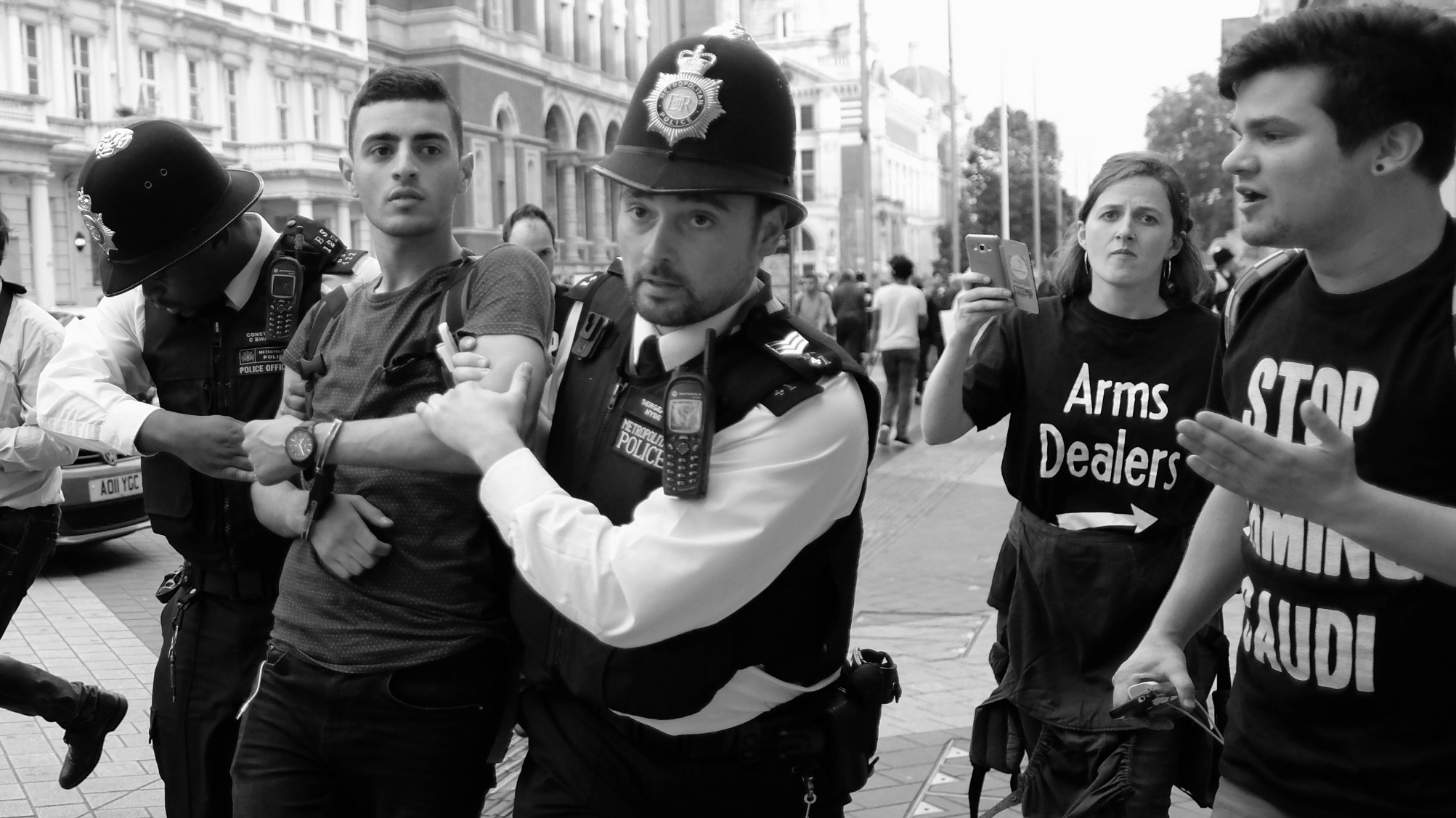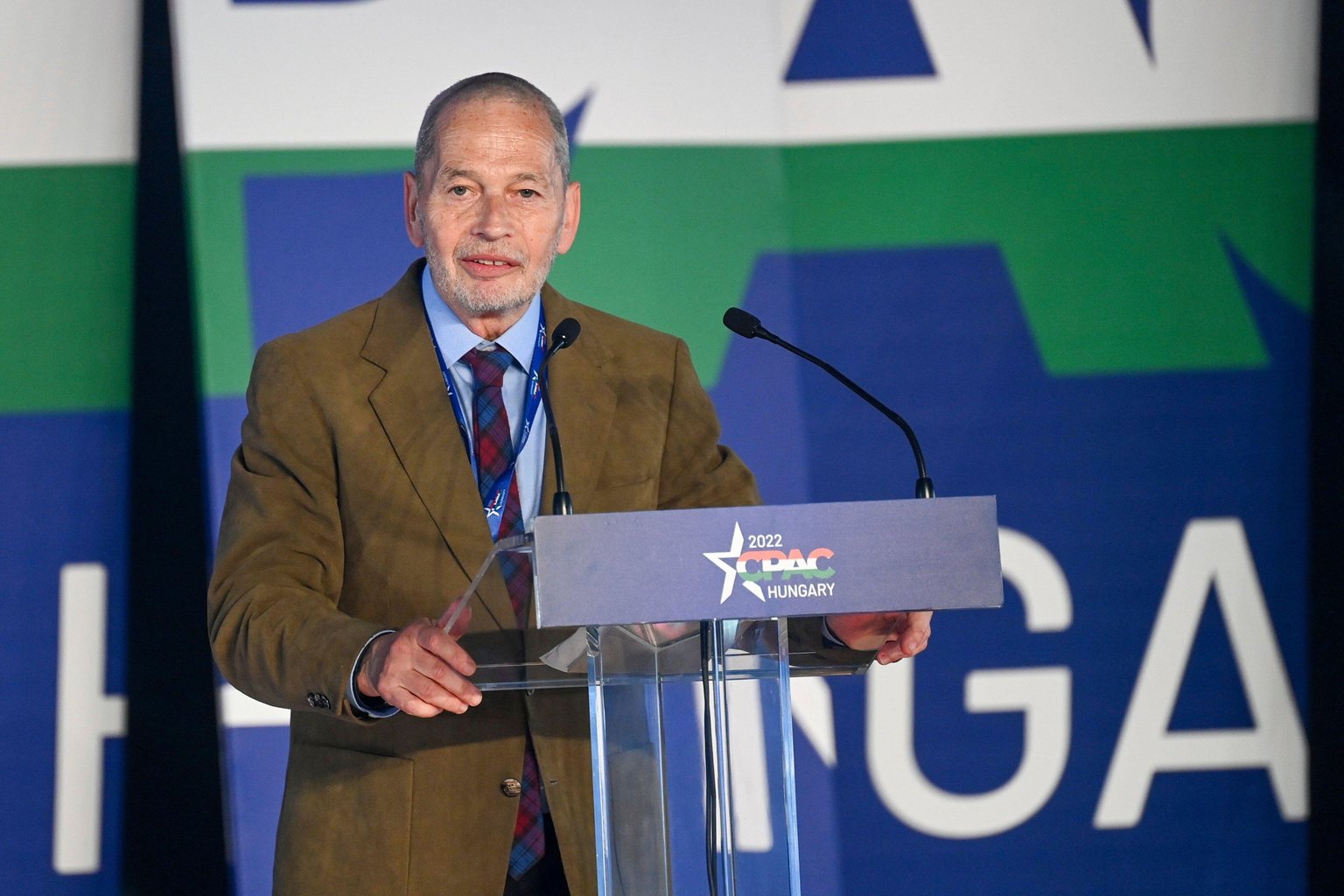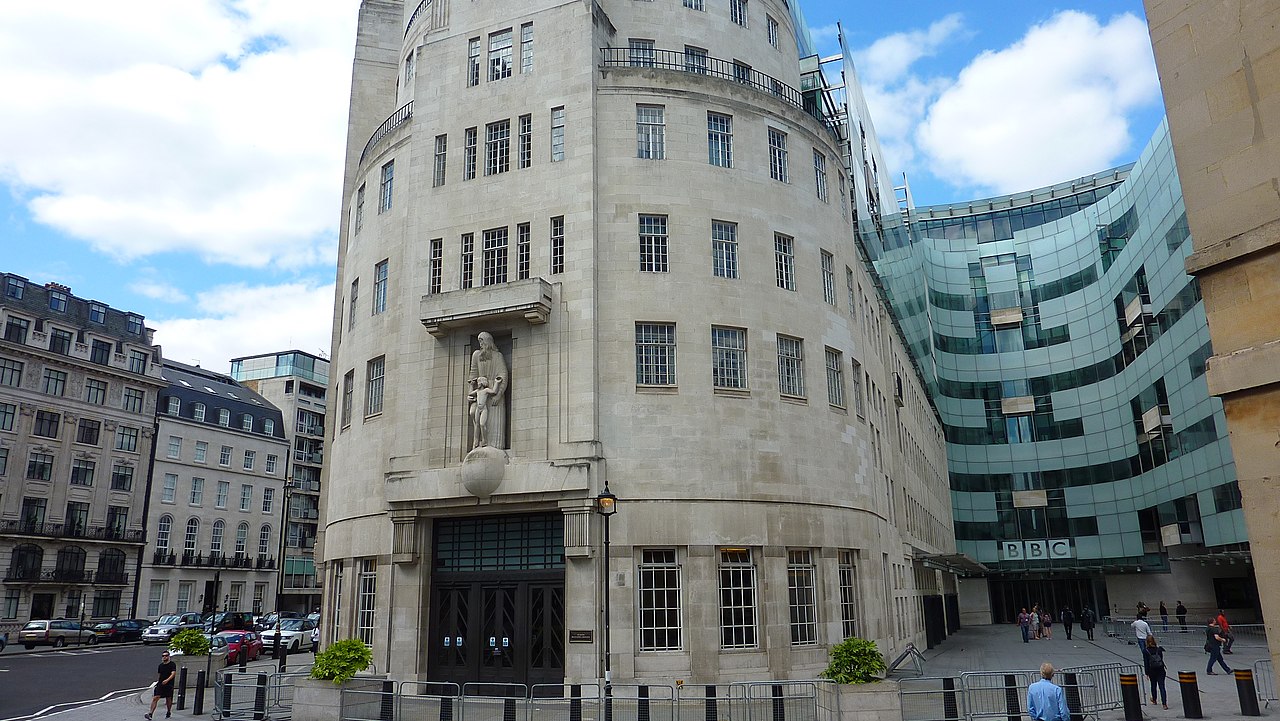[vc_row][vc_column][vc_column_text css=”.vc_custom_1579268532812{margin-bottom: 30px !important;background-color: #f5f5f5 !important;}”]Please note: This is part of a series of guides produced by Index on Censorship on the laws related to freedom of expression in England and Wales. They are intended to help understand the protections that exist for free speech and where the law currently permits restrictions.[/vc_column_text][vc_column_text]This guide is available to download as a PDF here.[/vc_column_text][vc_single_image image=”111968″ img_size=”large” add_caption=”yes” alignment=”center”][vc_raw_html]JTNDZGl2JTIwc3R5bGUlM0QlMjJmb250LXNpemUlM0EuOWVtJTNCcGFkZGluZyUzQTVweCUzQmJhY2tncm91bmQtY29sb3IlM0FXaGl0ZVNtb2tlJTNCZmxvYXQlM0FyaWdodCUzQm1hcmdpbi1sZWZ0JTNBMTVweCUzQndpZHRoJTNBNDAlMjUlM0IlMjIlM0UlM0NoNCUzRVRhYmxlJTIwb2YlMjBjb250ZW50cyUzQyUyRmg0JTNFJTBBJTNDb2wlM0UlMEElM0NsaSUzRSUzQ2ElMjBocmVmJTNEJTIyJTIzdG9wJTIyJTNFSW50cm9kdWN0aW9uJTNDJTJGYSUzRSUzQyUyRmxpJTNFJTBBJTNDbGklM0UlM0NhJTIwaHJlZiUzRCUyMiUyM3BvMiUyMiUzRUJyZWFjaCUyMG9mJTIwdGhlJTIwcGVhY2UlM0MlMkZhJTNFJTNDJTJGbGklM0UlMEElM0NsaSUzRSUzQ2ElMjBocmVmJTNEJTIyJTIzcG8zJTIyJTNFUHVibGljJTIwT3JkZXIlMjBBY3QlMjAxOTg2JTNDJTJGYSUzRSUzQyUyRmxpJTNFJTBBJTNDbGklM0UlM0NhJTIwaHJlZiUzRCUyMiUyM3BvNCUyMiUzRVRoZWF0cmVzJTIwQWN0JTIwMTk2OCUzQyUyRmElM0UlM0MlMkZsaSUzRSUwQSUzQ2xpJTNFJTNDYSUyMGhyZWYlM0QlMjIlMjNwbzUlMjIlM0VDb21tdW5pY2F0aW9ucyUyMEFjdCUyMDIwMDMlM0MlMkZhJTNFJTNDJTJGbGklM0UlMEElM0NsaSUzRSUzQ2ElMjBocmVmJTNEJTIyJTIzcG82JTIyJTNFTWFsaWNpb3VzJTIwQ29tbXVuaWNhdGlvbnMlMjBBY3QlM0MlMkZhJTNFJTNDJTJGbGklM0UlMEElM0MlMkZvbCUzRSUzQyUyRmRpdiUzRQ==[/vc_raw_html][vc_custom_heading text=”1. Introduction” font_container=”tag:h1|text_align:left” use_theme_fonts=”yes” el_id=”ct1″][vc_column_text]One of the primary functions of the police in England and Wales is to maintain peace and order.
Under the Human Rights Act 1998, police officers must respect people’s right to freedom of expression guaranteed by Article 10 of the European Convention on Human Rights (ECHR). However, Article 10 of the convention states that restrictions on people’s free expression rights may be justified on the grounds of preventing disorder or crime, protecting public safety and protecting the rights of others (see text box).
Many of the public order crimes discussed in this guide are contained in the Public Order Act 1986, which sets out the offences of riot, affray, violent disorder, and the different types of criminal harassment, alarm or distress. However, there are also more specific offences, such as “indecent or racist chanting” at a football match under the Football (Offences) Act 1991. The police also retain a common law power to arrest an individual for “breach of the peace”. The Public Order Act also includes special provision on offences intended to stir up religious and racial hatred and hatred on the grounds of sexual orientation. Please see our separate guidelines: “UK laws relating to ‘hate speech’” for more information.
In addition to speech-related actions that may constitute public order, individuals may break the law for things they say or share online, in phone calls or in written form, such as letters. These are offences are largely covered by the Communications Act and Malicious Communications Act.[/vc_column_text][/vc_column][/vc_row][vc_row][vc_column][vc_separator el_width=”80″ el_id=”po2″][/vc_column][/vc_row][vc_row][vc_column][vc_custom_heading text=”2. Breach of the peace” font_container=”tag:h1|text_align:left” use_theme_fonts=”yes”][vc_column_text]A breach of the peace is an act (or the threat of an act) that harms a person as a result of violence, or is likely to cause such harm, or makes a person fear such harm. The belief that actual harm is likely to occur must be reasonable.[/vc_column_text][vc_custom_heading text=”Actual harm” use_theme_fonts=”yes”][vc_column_text]The courts have defined “actual harm” to mean harm to a “person’s body or property” (R v Howell (Errol) 1982). There should be a “wrongful” or unlawful act, such as an assault or riot, leading someone to be harmed, or to fear harm, before the police can make an arrest for breach of the peace.
Police officers (and ordinary citizens) can arrest people committing a breach of the peace in their presence, or those they reasonably think will commit a breach of the peace in the immediate future, or who have committed a breach of the peace and are likely to do it again. To comply with human rights law, the purpose of arrest must be to bring the perpetrator before a “competent legal authority”. No warrant is required, and a breach of the peace can take place on private or public property. When the police believe a breach of the peace is likely to happen in the immediate future, they can use their powers only when the breach is imminent. Judicial Review proceedings may be brought against the police if their actions contravene these requirements.
Breach of the peace is governed by common law. Common law, also referred to as case law, is made by judges and developed in the cases that come before the courts over time. (This is in contrast to statutory law, which is written law passed by Parliament.) It means that there are no specific, relevant extracts of written legislation for common law.
Case law tells us that the police must exercise their breach of the peace power of arrest in a way that respects people’s rights to free expression and assembly (as well as their other human rights). Arresting preachers for refusing to stop preaching because they might cause a breach of the peace, for example, was found to breach the preachers’ rights in the case of Redmond-Bate v Director of Public Prosecutions 1999. The court said the police should have used their power of arrest against the large crowd that had gathered and were showing hostility towards the women preachers, and not against the women themselves. However, the court said that if the preachers were being so provocative that someone in the crowd might – not wholly unreasonably – be moved to violence, the police would be entitled to ask the preachers to stop, and arrest them if they refused to.
Although there is a power of arrest for breach of the peace, there is no criminal offence of breach of the peace. Therefore, while someone can be arrested for breach of the peace, they cannot be prosecuted. However, they might be prosecuted for assault, violent disorder, or any other crime that led to the breach of the peace.[/vc_column_text][/vc_column][/vc_row][vc_row][vc_column][vc_separator el_width=”80″ el_id=”po3″][/vc_column][/vc_row][vc_row gap=”35″][vc_column][vc_single_image image=”111978″ img_size=”large” add_caption=”yes” alignment=”center”][vc_custom_heading text=”3. Public Order Act 1986″ font_container=”tag:h1|text_align:left” use_theme_fonts=”yes”][vc_column_text]The Public Order Act covers several offences, including:
- Riot (Section 1)
- Violent disorder (Section 2)
- Affray (Section 3)
- Fear or provocation of violence (Section 4)
- Intentionally causing harassment, alarm or distress (Section 4a)
- Harassment, alarm or distress (Section 5)
While the riot, violent disorder and affray sections are more focused on preventing physical displays of violent or threatening behaviour, Sections 4, 4a and 5 criminalise the use of threatening, abusive or offensive words (or behaviour) in a way that is likely to cause distress, harassment or alarm.[/vc_column_text][vc_custom_heading text=”Public Order Act offences” use_theme_fonts=”yes”][vc_column_text]
Riot
A riot involves 12 or more people using or threatening violence for a common purpose, with their conduct (taken together) resulting in reasonable people present at the scene fearing for their safety.
Violent disorder
Violent disorder involves three or more people using or threatening violence, with their conduct resulting in reasonable people present at the scene fearing for their safety.
Affray
Affray involves one person using or threatening violence, with his or her conduct resulting in reasonable people present at the scene fearing for their safety. Under affray, “a threat of violence cannot be made by the use of words alone”.
Fear or provocation of violence (section 4)
Fear or provocation of violence involves one person using towards another person “threatening, abusive or insulting words or behaviour” or “distributing or displaying to another person any writing, sign or other visible representation which is threatening, abusive or insulting” with the intention of making a person believe immediate violence will be used, or to provoke such violence, or where it is likely violence would be provoked. There is no crime if both parties are inside a private residence. (Neither a domestic garden nor a communal landing in a block of flats are classed as residences.)
Intentionally causing harassment, alarm or distress (section 4a)
Intentionally causing harassment, alarm or distress involves one person using threatening, abusive or insulting words or behaviour, or disorderly behaviour, or displaying writing, a sign or another visual that is threatening, abusive or insulting, with the intent and result of causing harassment, alarm or distress.[/vc_column_text][vc_column_text css=”.vc_custom_1579537002672{margin-top: 15px !important;margin-bottom: 0px !important;padding-top: 5px !important;padding-right: 10px !important;padding-bottom: 10px !important;padding-left: 10px !important;background-color: #397cbf !important;}”]
Case study: Intentionally causing harassment, alarm or distress
In July 2019, a 38-year-old woman was arrested under Section 4a of the Public Order Act 1986 for shouting homophobic abuse at people taking part in a Pride march. Footage posted on social media showed the woman shouting “Shame on you” to participants, one of whom was wearing a rainbow flag. She also shouted: “God created Adam and Eve, not Adam and Steve. Shame on you, shame on all of you. Shame on you, you despicable people.” Jamila Choudhury was given a three-month prison sentence, suspended for 12 months and ordered to pay a £122 victim surcharge and £100 compensation.[/vc_column_text][/vc_column][/vc_row][vc_row][vc_column][vc_column_text]
Harassment, alarm or distress (section 5)
Harassment, alarm or distress involves one person using threatening or abusive words or behaviour, or disorderly behaviour, or displaying material which is threatening or abusive, within the hearing or sight of someone likely to suffer harassment, alarm or distress as a result.
There is no requirement to prove that anyone was actually harassed, alarmed or distressed. It is enough if the abusive words can be heard or seen by someone likely to be caused harassment, alarm or distress. Uniquely among the Public Order Act offences, there is no need to prove intention here.
Section 5 is therefore broader than the other offences, particularly Section 4a, as it can apply where the person is aware of the potential for their conduct to be threatening or abusive, even without intending this result. [/vc_column_text][vc_empty_space height=”16px”][vc_column_text]The Public Order Act itself also has additional rules applying to conduct intending to stir up racial or religious hatred, or hatred on the grounds of sexual orientation (see separate guide on this).
Parts III and IIIA of the act create offences against writings, plays, recordings or broadcasts where these are intended to stir up racial hatred (in Part III) or religious hatred or hatred on grounds of sexual orientation (Part IIIA).
However, Part IIIA specifically contains protections for free speech where religion is involved. This protection significantly narrows the scope of Part IIIA.[/vc_column_text][vc_column_text css=”.vc_custom_1579536813352{margin-top: 15px !important;margin-bottom: 15px !important;padding-top: 5px !important;padding-right: 10px !important;padding-bottom: 10px !important;padding-left: 10px !important;background-color: #397cbf !important;}”]
The PEN amendment
Section 29J of Part IIIA (the so-called ‘PEN amendment’) states that the rules on public order must not be applied “in a way which prohibits or restricts discussion, criticism or expressions of antipathy, dislike, ridicule, insult or abuse of particular religions or the beliefs or practices of their adherents, or of any other belief system or the beliefs or practices of its adherents, or proselytising or urging adherents of a different religion or belief system to cease practising their religion or belief system.”[/vc_column_text][/vc_column][/vc_row][vc_row][vc_column][vc_column_text]
Harassment, alarm or distress
“Harassment”, “alarm” and “distress” have not been defined within the legislation. However, courts have ruled that “distress” requires emotional disturbance and upset. “Harassment” does not require emotional disturbance, but it must not be trivial. It does not need any element of apprehension about personal safety.
Insults
Section 5 no longer contains a prohibition on “insulting words or behaviour”. This reference was removed in 2013 following a high-profile campaign spearheaded by religious and secular campaign groups as well as comedian Rowan Atkinson, human rights campaigner Peter Tatchell and MP David Davis.[/vc_column_text][/vc_column][/vc_row][vc_row][vc_column][vc_separator el_width=”80″ el_id=”po4″][/vc_column][/vc_row][vc_row][vc_column][vc_custom_heading text=”4. Theatres Act 1968″ font_container=”tag:h1|text_align:left” use_theme_fonts=”yes”][vc_column_text]The Theatres Act 1968 provides a specific offence, under Section 6, of using threatening, abusive or insulting words if the intention is to provoke a breach of the peace, or the performance as a whole is likely to result in a breach of the peace.
The offence criminalises only the actions of the director or the “presenter” of the play, although these roles are not defined within the legislation. Performers are immune unless they are not performing in accordance with directions they have been given.
The act states that a decision to prosecute under Section 6 may be taken only with the consent of the attorney-general (the government’s chief legal adviser). The requirement for the attorney-general’s permission means that a decision to prosecute is likely to be considered particularly carefully, given that the attorney-general has a higher profile than other prosecutors, and such a decision would be subject to greater public scrutiny. This scrutiny may include whether or not the director’s right to freedom of expression and the public’s right to receive information have been sufficiently considered.[/vc_column_text][/vc_column][/vc_row][vc_row][vc_column][vc_custom_heading text=”Gang injunctions” use_theme_fonts=”yes” el_id=”ct41″][vc_column_text]The Policing and Crime Act 2009 introduced the so-called “injunctions to prevent gang-related violence” that mean a court can require an individual to do, or be prevented from doing, “anything” described in the injunction. The police and local government can apply to a court for an injunction. In the explanatory notes to the legislation, the government said the purpose of the gang injunctions was to prevent serious acts of violence from occurring, break down gang culture and prevent younger gang members’ behaviour from escalating, and give local authorities an opportunity to engage with gang members and help them develop effective strategies to exit gangs.
For the purposes of gang injunctions, something is “gang-related” if it relates to the activities of a group of three or more people who share one or more characteristics that enable them to be identified as a group.
To grant an injunction, a court must first be satisfied that the proposed subject of the injunction has engaged in – or encouraged or assisted – gang-related violence. The court must also think it necessary to grant the injunction in order to prevent that person from engaging in gang-related violence or to protect them from such violence. The court can require the individual to do, or be prevented from doing, “anything” described in the injunction. Although this gives a court very broad discretion, any requirements must be compliant with human rights law, which means it must not unlawfully restrict free expression or free assembly rights under Articles 10 and 11 of the ECHR.
Gang injunctions have been used in recent years to prohibit people from making music. In 2011, “Matt” (whose real name was not revealed so as to maintain his safety), a teenage rapper from south London, was served with a gang injunction that banned him from making any songs or videos that might encourage violence. He faced up to two years in prison if he breached the conditions. Southwark Council – the local authority that applied for the injunction – asked for it partly because videos featuring the rapper contained threats targeting other gangs in the area. While Matt admitted some of his lyrics were violent, he said his lyrics should not be seen as a real threat but as a description of life growing up on an estate in London.[/vc_column_text][vc_column_text css=”.vc_custom_1579536569934{margin-top: 15px !important;margin-bottom: 15px !important;padding-top: 5px !important;padding-right: 10px !important;padding-bottom: 10px !important;padding-left: 10px !important;background-color: #397cbf !important;}”]
Case study: Gang injunctions against Drill musicians
In January 2019, drill artists Skengdo and AM were given nine-month suspended prison sentences for breaching a gang injunction issued against them in August 2018. The injunction banned them from going to certain areas and associating with certain individuals, and restricted their ability to make music and perform. The police claimed the injunction was breached when Skengdo and AM “performed drill music that incited and encouraged violence against rival gang members and then posted it on social media”. The police used footage of them performing Attempted – a response to music from other south London artists – in a club to make their case.
In February 2019, 65 signatories from human rights organisations as well as academics, musicians and lawyers wrote an open letter, urging the Metropolitan Police to stop using gang injunctions against musicians as a means of preventing violence.[/vc_column_text][/vc_column][/vc_row][vc_row][vc_column][vc_column_text]In the case of Jones v Birmingham City Council 2018, the Court of Appeal ruled that gang injunctions did not breach people’s fair-trial rights under the ECHR. Jerome Jones, who had an injunction imposed on him, argued that it was unlawful for the legislation to require proof of involvement in gang-related violence based on the lower civil-law standard of proof (i.e. the balance of probabilities). He argued that because of the punitive and serious nature of gang injunctions, the higher criminal standard of being “beyond a reasonable doubt” should be satisfied before a gang injunction could be imposed. The court disagreed.
Jones’s injunction included a prohibition on appearing in any music videos.[/vc_column_text][/vc_column][/vc_row][vc_row][vc_column][vc_custom_heading text=”Powers of the police and prosecutors” use_theme_fonts=”yes” el_id=”ct42″][vc_column_text]
The police have statutory and common law powers to deal with disorder and to prevent anticipated disorder. They can do so by making arrests for various offences, and, importantly, by making arrests or giving directions to people to prevent breaches of the peace.
In exercising these powers, the police also have duties to give protection to the freedom of speech of all groups and individuals, and any other relevant freedoms, including the right to protest and to manifest a religion. The role of the police naturally shifts with changes in culture and the law. The current position is that the police have an obligation to ensure law and order and, as a public authority, an additional obligation under the Human Rights Act 1998 to preserve, and in some cases to promote, fundamental rights such as the right to protest and the right to freedom of expression protected by Articles 10 and 11 of the ECHR, currently incorporated into the UK’s domestic law.
The result is that the police conduct a pragmatic balancing act between the different parties. However, in certain contexts, the correct balance may not be being struck. For example, in the artistic world there have been numerous incidents where police have advised the closure or cancellation of controversial shows or exhibits in order to avoid public disorder. For example, Exhibit B – an installation showing a series of tableaux vivants recreating the 19th century “human zoo” fashion of presenting Africans as exhibits to European audiences – was closed following the police’s advice that if the show were not closed, it could trigger riots. The manager of the venue showing Exhibit B said that when police issued their “advice” to close the show, five officers stood over him while he wrote a letter agreeing to close it.
Other problems with policing controversial artwork remain. One issue is the police’s requests for fees to cover their services when policing controversial shows.
[/vc_column_text][/vc_column][/vc_row][vc_row][vc_column][vc_separator el_width=”80″ el_id=”po5″][/vc_column][/vc_row][vc_row][vc_column][vc_custom_heading text=”5. Communications Act 2003″ font_container=”tag:h1|text_align:left” use_theme_fonts=”yes”][vc_column_text]The Counter-Terrorism and Security Act 2015 placed a legal duty on certain bodies to “have due regard to the need to prevent people from being drawn into terrorism”. This duty is one aspect of the government’s Prevent strategy, within its wider counter-terrorism strategy, known as Contest. The aim of Prevent, according to the government, is to “reduce the threat to the UK from terrorism by stopping people becoming terrorists or supporting terrorism”. The duty applies to bodies in the UK that have a role in protecting vulnerable people and/or national security, including schools, universities, prisons, National Health Service trusts and local authorities.
The Prevent guidance demands the bodies take a “risk-based approach”. They must first understand the “risk of radicalisation” within their institutions, and form appropriate policies and procedures to deal with that risk, ensuring frontline and managerial staff are equipped to deal with the risk of radicalisation. This means developing training for staff members on the Prevent duty.
The guidance states that the Prevent programme must not include any “covert activity against people or communities”. But it also states that information-sharing of personal data may be allowed in order, for example, to refer a person at risk of being drawn into terrorism to the appropriate support.
Many institutions will need to work with Home Office Prevent co-ordinator teams who will monitor the institutions’ activities.[/vc_column_text][/vc_column][/vc_row][vc_row][vc_column][vc_custom_heading text=”Prosecutions under section 127″ use_theme_fonts=”yes”][vc_column_text css=”.vc_custom_1579536539583{margin-top: 15px !important;margin-bottom: 15px !important;padding-top: 5px !important;padding-right: 10px !important;padding-bottom: 10px !important;padding-left: 10px !important;background-color: #397cbf !important;}”]
Case study: The Twitter joke trial
In 2010, Paul Chambers, who was planning to fly to Northern Ireland to meet his then girlfriend posted a message on Twitter, saying “Crap! Robin Hood airport is closed. You’ve got a week and a bit to get your shit together otherwise I’m blowing the airport sky high!!”
Chambers was subsequently arrested and charged with “sending a public electronic message that was grossly offensive or of an indecent, obscene or menacing character contrary to the Communications Act 2003.” He was found guilty fined £385 and ordered to pay £600 costs.
The conviction was widely condemned as a miscarriage of justice and was appealed three times, the conviction being quashed as a result of the third appeal.[/vc_column_text][vc_column_text]
Other examples
Azhar Ahmed (2012): Convicted for posting on Facebook that British soldiers “should die and go to hell” on Facebook March 2012. Ahmed was sentenced to 240 hours of community service and £300 fee.
Robert Riley (2014): Sent to prison for eight weeks for saying he would have killed murdered teacher Ann Maguire and all her colleagues. Chairwoman of the bench, Georgina Scannell, said the court had no choice but to send the defendant to jail. “The offensive messages outraged the public,” she said. “You had complete disregard for the tragic death of Ann Maguire. Besides this, countless other vile messages were made by you. The bench finds these were racially and religiously aggravated. The offences are so serious that only a period of immediate custody can be justified.”
Count Dankula (2018): Scottish police arrested Mark Meecham (known on YouTube Count Dankula) in May 2016 for posting a video online of him teaching his girlfriend’s dog to make a Nazi salute. He was found guilty in March 2018 and fined £800. The judged sided with the prosecution who said “context and intent are irrelevant” even though Count Dankula made clear the video was a joke.[/vc_column_text][/vc_column][/vc_row][vc_row][vc_column][vc_separator el_width=”80″ el_id=”po6″][/vc_column][/vc_row][vc_row][vc_column][vc_custom_heading text=”6. Malicious Communications Act” font_container=”tag:h1|text_align:left” use_theme_fonts=”yes”][vc_column_text]The Malicious Communications Act 1988 states that any person who sends to another person a letter, electronic communications or article of any description which conveys a message which is indecent or grossly offensive, a threat or information that is false and known or believed to be false by the sender; or any article or electronic communication which is, in whole or part, of an indecent or grossly offensive nature is guilty of an offence if their purpose in sending it is to “cause distress or anxiety to the recipient”.
Prosecutions under Malicious Communications
Roman Catholic Veronica Connolly, who objected to the morning-after pill, sent images of aborted foetuses to pharmacies. Connolly was prosecuted under the Malicious Communications Act 1988, which she held prosecution violated her right to freedom of expression under Article 10 of the ECHR. Her appeal against prosecution was dismissed after it was deemed that Connolly’s right to express her views did not justify the distress and anxiety she intended to cause those who received the photographs and they had the right not to receive such material. It was significant in that it was argued those who received the material were in no position to influence public debate.[/vc_column_text][/vc_column][/vc_row][vc_row][vc_column][vc_separator el_width=”80″][/vc_column][/vc_row][vc_row][vc_column][vc_custom_heading text=”Ackowledgements” use_theme_fonts=”yes”][vc_column_text]This guide was produced by Index on Censorship, in partnership with Clifford Chance.[/vc_column_text][/vc_column][/vc_row]





